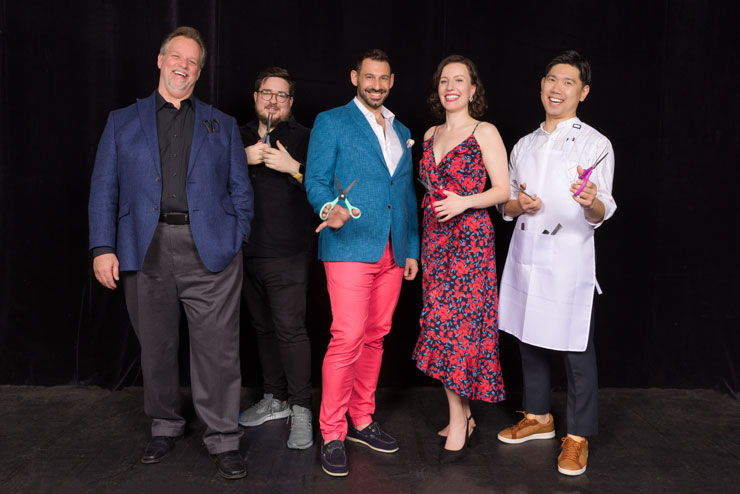
From left, Kristopher Irmiter (Dr. Bartolo), Rafael Porto (Basilio), Michele Angelini (Count Almaviva), Stephanie Doche (Rosina), Young-Kwang Yoo (Figaro) in FGO's final production of its anniversary season, "Barber of Seville." (Photo by Eric Joannes)
Matt Cooksey, Florida Grand Opera's stage director of "The Barber of Seville," opening this weekend (Saturday, April 29, Sunday, April 30 and Tuesday, May 2) at the Arsht Center, now knows Gioachini Rossini from two sides of the stage.
“The first time I did 'The Barber of Seville' was when I was in the chorus of Nashville Opera. It was a great production, but as a chorister, you only get to see the 30 or 40 minutes that you’re actually in the show. Now that I’m getting to learn the whole show, it’s so much more exciting. It’s a comic director’s dream show," says Cooksey.
The classic comic opera traces the adventures of handsome young Count Almaviva as he courts the lovely Rosina in spite of her jealous guardian’s attempts to thwart him. The Count would never have succeeded without help from the crafty Figaro (yes, that Figaro, Figaro, Figaro!), who is much more than just a barber. Romance, secret messages, and disguises ensue.
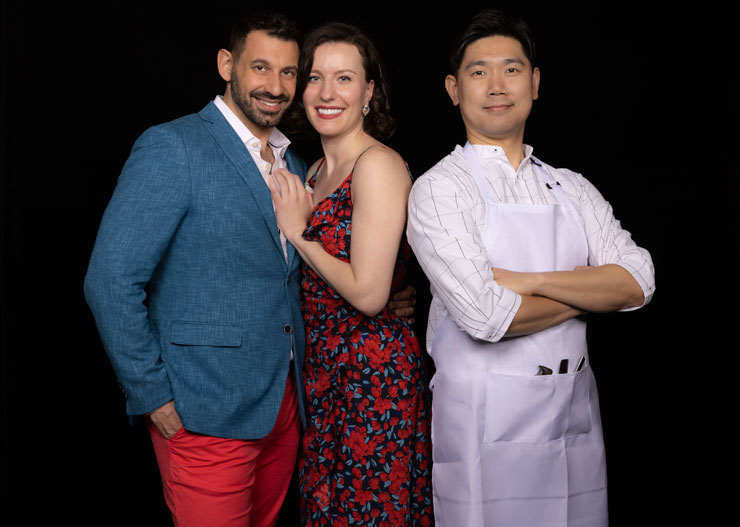
From left, Michele Angelini (Count Almaviva), Stephanie Doche (Rosina), Young-Kwang Yoo (Figaro) (Photo by Eric Joannes)
"Il barbiere di Siviglia" in Italian is an archetype of opera buffa (comic opera), and "The Barber of Seville" by Rossini is known as the "opera buffa of all buffas."
Susan T. Danis, the general director and CEO, of Florida Grand Opera, says that "Seville" is always an audience favorite. "We wanted to end our season on a light, happy note, and what better way to do that than with one of the most beloved comic operas of all time?" She says the music "makes you dance in your seat, while you marvel at the vocal fireworks coming from the singers."
FGO's conductor, Anthony Barrese, is no stranger to Rossini’s infectious melodies. "This is the 12th Rossini opera I’ve done," he says, " 'Barber' was one of the first Rossini operas I conducted."
He says one of the ways he approaches the score is to put himself in the mindset of 1816, the year the opera premiered on Feb. 20 at Teatro Argentina in Rome.
"There was no conductor. They didn’t really exist, so it was just Rossini at the fortepiano trying to keep things moving along. I think we’ve grafted a lot of late Romantic ideas onto what is essentially a classical piece, which would have been more cut-and-dried. But to the extent that there is room for maneuvering and creativity . . . I always tell singers, ‘If Rossini were in Miami today, he would write the vocal part differently for you than he did for the woman who sang it in 1816.' "
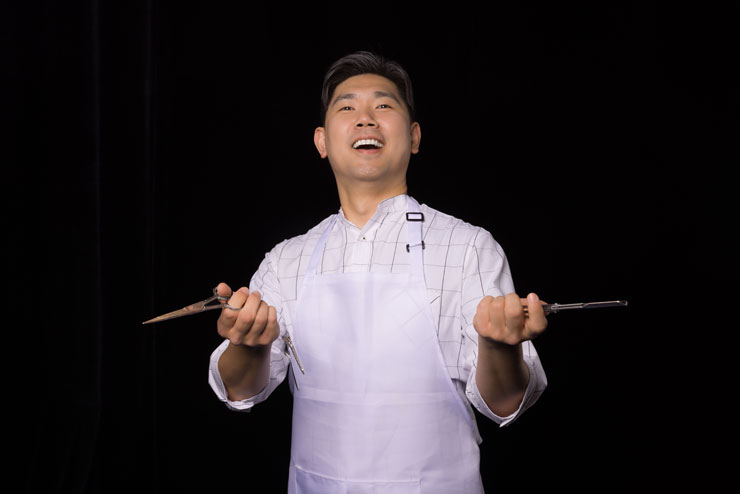
Young-Kwang Yoo as Figaro in Florida Grand Opera's "The Barber of Seville." (Photo by Eric Joannes)
As a young conductor, Barrese says he approached "Barber of Seville" invariably the way every conductor has "for the past 200 years."
"(It) has accrued a lot of traditions that don’t necessarily have anything to do with what Rossini wrote. The more I do it, the more I question every single inherited tradition, and I have more courage each time to ask the singers to question the assumptions they have about it. . . I really do feel that it has to be fresh, and the best, easiest way to make it fresh is to just rip off all these accumulated bad traditions.”
Cooksey says that he gave much thought to how to present the opera and give it a twist for South Florida.
"I noticed there's a history of putting substitute arias into the 'Lesson Scene' (in Act 2)". . . The original (aria) is a bit long and not one of Rossini’s most firework-y pieces. We came up with not one, but two short substitute arias."
One is from Rossini's Tancredi, “Di tanti palpiti,” based on Voltaire's play "Tancrède" and the other is by a composer and singer named Manuel García. Garcia, the Spanish superstar tenor of the day, premiered the role of Count Almaviva when the opera opened in Rome.
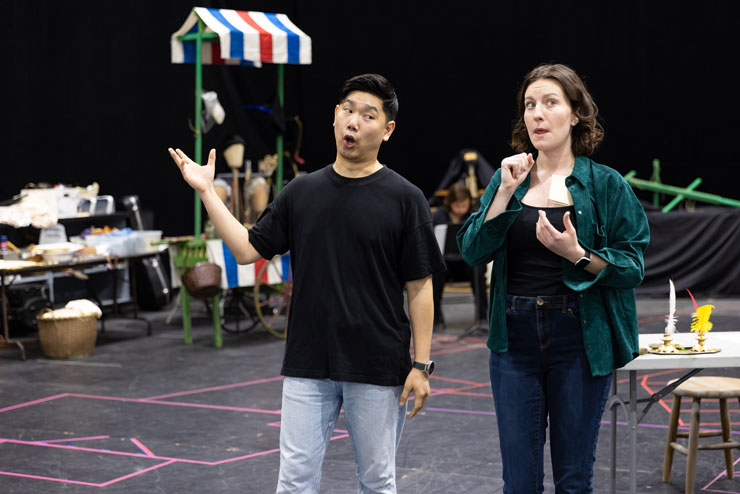
Figaro (Young-Kwang Yoo) tells Rosina (Stephanie Doche) that he has a message from her would-be lover in FGO's "Barber of Seville." (Photo by Eric Joannes)
". . . We’re using an aria he wrote for his one-person Spanish opera 'El poeta calculista called 'Yo que soy contrabandista.' I thought, 'We’re in South Florida, I’d love to bring more Spanish into the show so that we can be a little bit more authentic to Seville. I’m directing the show for South Florida and to me, this was the best way that we could pay homage to the people that live here.”
The overture to "The Barber of Seville" is one of Rossini's most known works. In fact, it was immortalized by Warner Bros. Looney Tunes whose creators felt the soundtrack was the perfect fit for a Bugs Bunny starring vehicle. In 1950, Bugs Bunny starred in "The Rabbit of Seville," which has since become a classic. Elmer Fudd ends up in Bugs' barber chair where he gets a clean shave to the soundtrack of Rossini’s overture.
FGO has presented "Barber of Seville" in almost a dozen productions with the first in 1947, followed by productions in 1955 (with famed baritone Robert Merrill in the title role), 1971, 1979, 1990, 1996, 2001, 2006, 2010, and 2016.
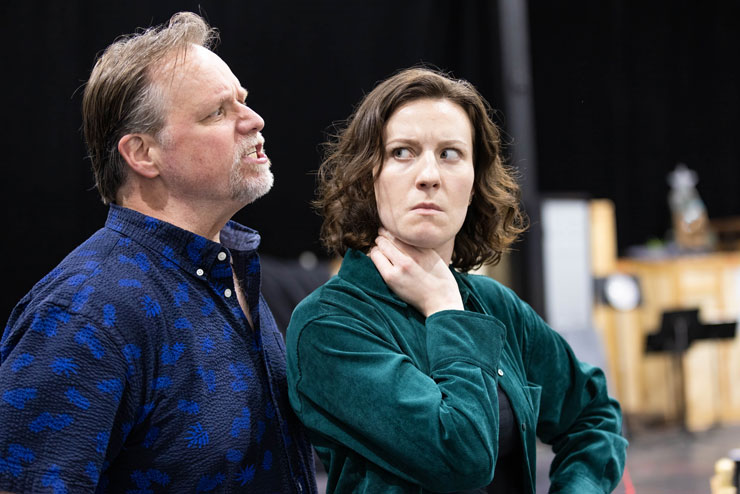
Dr. Bartolo (Kristopher Irmiter) warns his ward Rosina (Stephanie Doche) that he is not easily fooled in FGO's "Barber of Seville." (Photo by Eric Joannes)
"This is a genuinely fun show," says Cooksey. "And I'm going to be doing my best to get actual laughs, not polite 'ha-ha-has.' I like to be entertained and I hope I'm going to make a show that people are entertained by."
Note: FGO's Cindy Sadler contributed to this piece.
The show is sung in Italian with English and Spanish projected translations.
"The Barber of Seville" will be performed at 7 p.m. Saturday, April 29, 2 p.m., Sunday, April 30 and 8 p.m., Tuesday, May 2 at the Adrienne Arsht Center for the Performing Arts, 1300 Biscayne Blvd., Miami.
It will also be performed at the Broward Center for the Performing Arts, 201 SW 5th Ave., Fort Lauderdale, at 7:30 p.m. on Thursday, May 18 and Saturday, May 20.
Tickets are $16 to $230 depending on venue and seat location.
Call 800-741-1010 or go to www.fgo.org.




